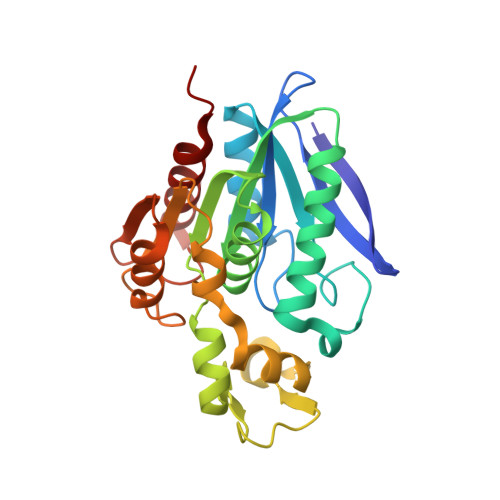The structure of a Lactobacillus helveticus chlorogenic acid esterase and the dynamics of its insertion domain provide insights into substrate binding.
Omori, K.K., Drucker, C.T., Okumura, T.L.S., Carl, N.B., Dinn, B.T., Ly, D., Sacapano, K.N., Tajii, A., Owens, C.P.(2023) FEBS Lett 597: 2946-2962
- PubMed: 37698360
- DOI: https://doi.org/10.1002/1873-3468.14731
- Primary Citation of Related Structures:
8SKM, 8SLJ - PubMed Abstract:
Chlorogenic acid esterases (ChlEs) are a useful class of enzymes that hydrolyze chlorogenic acid (CGA) into caffeic and quinic acids. ChlEs can break down CGA in foods to improve their sensory properties and release caffeic acid in the digestive system to improve the absorption of bioactive compounds. This work presents the structure, molecular dynamics, and biochemical characterization of a ChlE from Lactobacillus helveticus (Lh). Molecular dynamics simulations suggest that substrate access to the active site of LhChlE is modulated by two hairpin loops above the active site. Docking simulations and mutational analysis suggest that two residues within the loops, Gln 145 and Lys 164 , are important for CGA binding. Lys 164 provides a slight substrate preference for CGA, whereas Gln 145 is required for efficient turnover. This work is the first to examine the dynamics of a bacterial ChlE and provides insights on substrate binding preference and turnover in this type of enzyme.
- Department of Chemistry and Biochemistry, Schmid College of Science and Technology, Chapman University, Orange, CA, USA.
Organizational Affiliation:
















